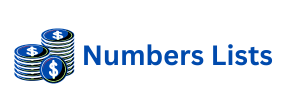Effective content writing is essential today. It serves as the cornerstone for digital presence. Businesses strive to reach wider audiences. They aim to engage them meaningfully. High-quality content attracts visitors. It also builds trust with potential clients. However, great content alone is not always enough. To truly succeed, content needs visibility. This visibility comes from strategic SEO. Backlinks play a crucial role here. They are votes of confidence from other web pages. Search engines use them to gauge authority. Understanding backlinks is paramount. It boosts your content’s ranking. It enhances overall digital performance. This article explores their power. We will discuss both external and internal types. Learn how to integrate them effectively. This ensures your content thrives online.
External Backlink Strategies for Enhanced Authority
An External Backlink connects your site to another. It points from an external domain to yours. These links are incredibly valuable. They signal trust to search engines. When reputable sites link to you, your credibility grows. It’s like receiving an endorsement. High-authority links pass “link juice.” This boosts your domain’s standing. External backlinks also drive referral traffic. Users on other sites discover your content. This brings new visitors to your pages. Securing these links requires effort. You need to create truly exceptional content. Think evergreen articles or unique research. Outreach to industry leaders helps. Building relationships is key for success. Guest posting is another common tactic. Always prioritize quality over quantity. A few strong links outweigh many weak ones. They are vital for long-term SEO growth.
Optimizing Internal Backlink Structures for SEO
Just as important is the Internal Backlink. This link connects one page on your site to another. Internal links are fully within your control. They are crucial for site navigation. Users can easily find related content. This improves their overall experience. Search engine crawlers also benefit greatly. Internal links help them discover all your pages. They pass link equity between posts. This strengthens the authority of deeper content. Strategic internal linking defines your site’s architecture. It highlights important “pillar” content. Use descriptive anchor text. This helps both users and search engines. It clarifies the linked page’s topic. Avoid generic phrases like “click here.” A well-organized internal link structure is powerful. It enhances discoverability and ranking. It keeps visitors engaged longer. This signals value to search engines. Plan your internal links thoughtfully. They are a core SEO component.
Implementing Effective Backlink Placement Tactics
Strategic placement is vital for both link types. Backlinks should always feel natural. They must flow seamlessly within the text. Avoid forced or awkward insertions. Contextual relevance is paramount. The anchor text should be descriptive. It should accurately reflect the linked content. For external links, choose authoritative sources. Link to research, statistics, or industry leaders. This validates your own claims. For internal links, guide users intuitively. Connect related topics logically. Think about user journey paths. Where would a reader want more information? Place links early in a paragraph. This often increases click-through rates. Diversify your anchor text too. Using the exact same phrase repeatedly can look spammy. Natural language is always preferred. Monitor your existing links regularly. Ensure they are still active. Update them as needed for optimal performance. This maintains a healthy link profile. It supports consistent SEO efforts. Proper implementation drives significant results.
Measuring the Impact of Your Backlink Strategy
Effective content writing demands measurement. You must track your backlink performance. This helps refine your strategy. Start by monitoring your keyword rankings. Do target keywords show improvement? Check your organic search traffic. An increase suggests better visibility. Analyze your domain authority (DA) score. A higher DA often correlates with more quality links. Utilize tools like Google Analytics. Look at referral traffic sources. See which external sites send visitors. Examine user engagement metrics. Are people spending more time on your pages? Are bounce rates decreasing? These indicate content quality and relevance. Regularly audit your backlink profile. Identify any broken or spammy links. Disavow harmful links if necessary. Continuously adjust your approach. Learn from what works best. Backlinks are an ongoing SEO task. Consistent effort yields lasting benefits. They cement your content’s authority. This leads to sustainable online success.
